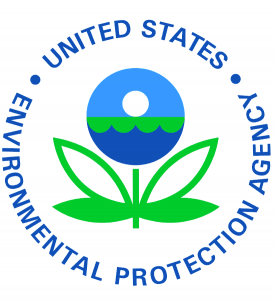EPA opens “multi-agency action plan” to research risks of crumb rubber in artificial-turf fields
After years of anecdotal evidence and rising concerns about the health risks of crumb-rubber infill in synthetic-turf playing fields, the U.S. Environmental Protection Agency has announced a long-term initiative to spearhead further research into the issue.
 This week the EPA outlined the framework of a process that will take about a year – and quite possibly beyond – to gather more information and consult with agencies, parents, coaches and industry representatives about the potential dangers of crumb rubber, the small chunks made from recycled automobile tires and used on some 12,000 fields across the United States and countless more abroad.
This week the EPA outlined the framework of a process that will take about a year – and quite possibly beyond – to gather more information and consult with agencies, parents, coaches and industry representatives about the potential dangers of crumb rubber, the small chunks made from recycled automobile tires and used on some 12,000 fields across the United States and countless more abroad.
Crumb rubber replicates the movement of natural soil on playing surfaces featuring synthetic grass blades, vastly improving the quality and playability of modern turf fields compared to their widely-reviled predecessors. But it has been found to contain at least 12 known carcinogens and is linked, by some, to increased incidences of cancer in youth soccer players.
“Limited studies have not shown an elevated health risk from playing on fields with tire crumb,” explained the EPA announcement, “but the existing studies do not comprehensively evaluate the concerns about health risks from exposure to tire crumb.”
The EPA will work in concert with the Centers for Disease Control and Prevention/Agency for Toxic Substances and Disease Registry (ATSDR) and the U.S. Consumer Product Safety Commission (CPSC) on this initiative. The government agencies will spend the rest of 2016 gathering data before presenting their findings and recommendations in a “draft status report” near the end of the year.
+READ: Former CDC toxicologist unsurprised by alleged link between artificial turf, cancer
EPA documents outline a four-part data gathering process:
1) Outreach to key stakeholders, states, relevant federal agencies and others
 2) Conduct a “data gaps analysis” to evaluate the existing scientific information related to rubber tire crumb and “build on current understanding of the state-of-the-science”
2) Conduct a “data gaps analysis” to evaluate the existing scientific information related to rubber tire crumb and “build on current understanding of the state-of-the-science”
3) Characterize and test tire crumb materials
4) Develop exposure scenarios to “consider all possible ways that one may be exposed – including by breathing, unintentionally ingesting, or touching tire crumb or the chemicals in tire crumb.”
This development follows on the heels of a widely-watched ESPN investigative report led by broadcast commentator and former U.S. Women’s National Team star Julie Foudy last year, who shared her reactions to the news with colleague Bob Ley on a special online edition of ESPN’s “Outside the Lines” on Tuesday.
+READ: TurfGate Reader: Women’s World Cup players take 2015 pitch fight to human rights tribunal
“Will there be a moratorium on building these [turf] fields? [The EPA] did say that there will NOT be a moratorium on building these fields,” said Foudy, also noting that no warning signs will be mandated for turf fields at this time.
“There’s clearly two sides to the argument,” she added, “depending on who you talk to, you get various sides to the story.”
Foudy also pointed out that the head of the EPA admitted that the agency has not studied the “ingestion issues,” referring to the potential negative effects of players coming into contact with crumb rubber via mouth, eyes, nose and broken skin.
The EPA had up to now showed little inclination to delve further into this topic. But other voices have long argued that the toxicity of the heavy metals found in crumb rubber, combined with young players’ potentially heavy and sustained exposure to it, adds up to significant long-term health risks.
“My basic advice is, don’t do it,” public health toxicologist Dr. David R. Brown told SoccerWire.com in 2014, summing up his recommendation to parents of young players regarding crumb rubber-based turf. “I think they would have to understand that there is a level of risk that the child is incurring.”
“If we feel the need to use [turf fields], I’d require that everyone shower and that they use only shoes that they would use on that field and that they not wear the same clothes in and around afterwards, because you want to reduce the chance that [tire crumbs] would be ingested.”
+READ EPA’s crumb rubber question-and-answer page
+FIND the full text of the EPA research action plan here (PDF)











